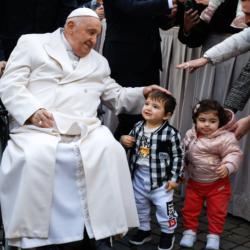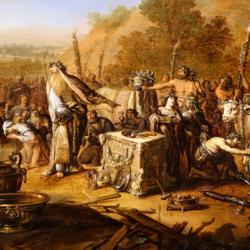In praise of outfield assists
I have been watching Boston Red Sox baseball for some years now -- 76 of them, as a matter of fact. But never do I remember such a rash of runners being thrown out at home plate on dramatically close plays as have been those gunned down lately by the present Red Sox outfield. In recent days Hunter Renfroe, Kike Hernandez, JD Martinez, and Danny Santana have all accomplished the feat successfully, with not a single near-miss.
I do not remember that ever having been done by the dear, departed outfield of Benintendi, Bradley, Jr., and Betts; the legendary triumvirate of Rice, Lynn, and Evans didn't do it back in the 70s; nor did the underrated trio of Williams, Piersall, and Jensen ever do it in the long-ago 50s. Not that I remember, anyway.
Williams, by the way, was never given credit for making himself into a very competent left fielder, which he did once he realized that he'd never be recognized as a great player if he couldn't play all aspects of the game. When he first arrived in Boston, he couldn't have cared less about defense, and that's the way some people always thought of him -- proving that your mother was right when she told you about first impressions lasting a long time. Blessed with neither great speed nor a great arm, Ted did become technically proficient.
Jimmy Piersall was a spectacular outfielder with a great arm that he hurt in a throwing contest against Willie Mays of the then New York Giants before a charity game at Fenway Park. He was never the same again, and it is the reason that no throwing contests are held today.
Jackie Jensen excelled in all aspects of the game. He was the American League MVP in 1958, and he was a Gold Glove winner. There are only two reasons he's not considered to be the greatest of all Red Sox right fielders: one is Dwight Evans and the other Mookie Betts. An intense fear of flying forced Jensen's early retirement from the game.
Christian Vazquez, who was on the receiving end of all those spectacular throws recently made by the current group in the outfield, and who had to spin and dive to make the tag-outs, deserves high honors for having completed the plays, but it was the throws, all right on the money, that were truly miraculous.
Before 2014, poor Vazquez would have been a hospital case as a result of so many close plays at the plate. That's when the catcher was allowed to block the plate as he awaited an incoming throw. The runner was allowed -- even encouraged -- to remove said blockage by any means necessary, which usually resulted in a fearsome collision. The catcher, concentrating on receiving the throw while the runner was barreling down the line from third, most often got the worst of the deal. Think about a defenseless Ray Fosse being wiped out by a Pete Rose flying block in the 1970 All-Star Game.
Buster Posey of the San Francisco Giants suffered a broken leg when he was taken down in a home plate head-on collision with Scott Cousins of the Miami Marlins in May of 2011. Posey, then one of baseball's brightest young stars, was lost for the season. The incident led to the establishment of "The Posey Rule," which prohibits the catcher from blocking the plate prior to catching the ball, and the runner from initiating contact.
It has meant the end of violent collisions and serious injuries but it has not diminished in any way the excitement of a close play at the plate. A ball thrown from the outfield and arriving at virtually the same moment as a runner coming down from third, with the catcher making the catch and applying the tag with only inches -- one way or the other -- to spare is the most exciting play in baseball, perhaps even in all sports.
Gone are the days when Lou Piniella of the Yankees would crash into Carlton Fisk of the Red Sox, as happened one night in 1976, which ended up with fists flying, precipitating a real brawl -- not the usual baseball fights that amount to nothing more that pushing, shoving, and a few angry words, but actual haymakers being thrown, and Bill Lee of the Sox missing two months because of a separated shoulder. But I don't miss them, not much, anyhow. Fisk, by the way, held onto the ball, and Piniella, for all his trouble, was out at the plate.
Anyhow, the last time I looked, the current Red Sox outfield leads the American League in the under-appreciated category of outfield assists with a total of 28. Hunter Renfroe is the individual leader with 11. I say under-appreciated because it means that every time an outfielder gets credited with an assist he is responsible for having thrown out a runner at the plate or trying to advance into scoring position. That means he has saved his team a whole lot of runs.
The most impressive display of assists by an outfielder, for my money, was racked up by Dom DiMaggio during his rookie year of 1940. He was not in the starting lineup when the season opened, but eventually worked his way into it at right field, taking over for Lou Finney.
DiMaggio's speed and throwing arm soon captured the attention of the Red Sox brass. Even though their then-center fielder, Doc Cramer, was an all-star for four years running, he soon was switched to right field and DiMaggio took over in center. At any rate by the end of the year, Dom was not only the Red Sox center fielder, but he also led the league in assists with 16 of them, despite playing in the field for only 94 games. To this day, 81 seasons later, he is the only outfielder in history to lead the league in assists while playing fewer than 100 games in the field.
Anyhow, this year's edition of the Red Sox have been a pleasant surprise and are great fun to watch, and all those outfield assists are just one of the reasons why.
- Dick Flavin is a New York Times bestselling author; the Boston Red Sox "Poet Laureate" and The Pilot's recently minted Sports' columnist.

















